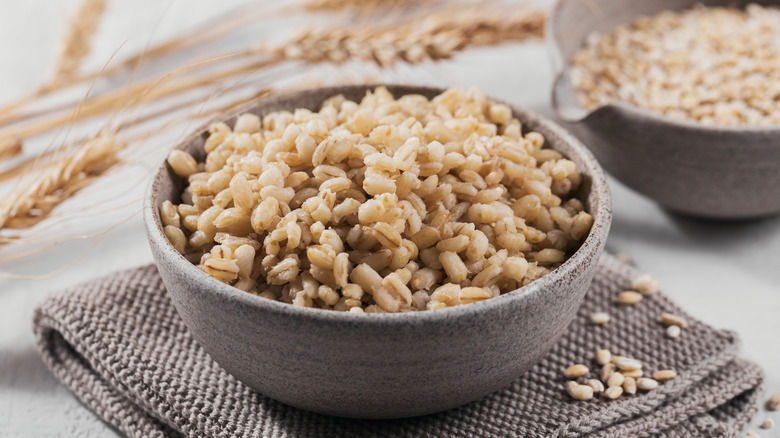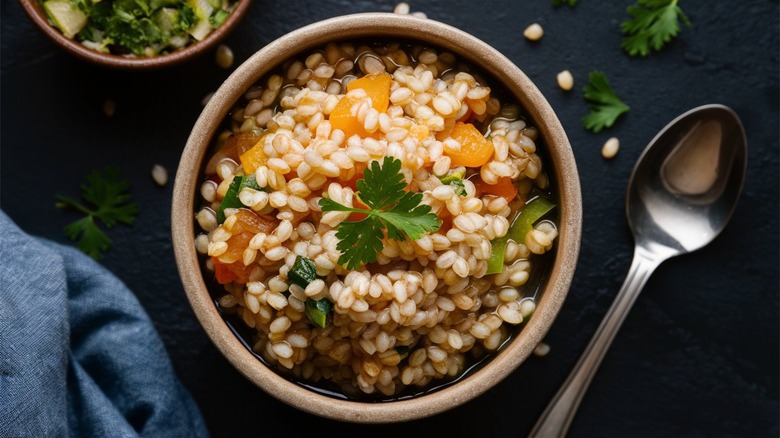The Water To Barley Ratio You Should Know By Heart
You're probably familiar with the grain barley as it relates to beer — but unless your pantry is particularly well stocked, it may not contain a bag of the ancient grain. We'd argue barley should have a regular spot alongside your rice, oats, and quinoa, though. The close cousin of wheat has been in the culinary lexicon since around 8,000 BCE and provides an earthy, nutty bite plus an array of fiber, vitamins, and minerals. Often found in recipes for hearty soups, try working it into your regular weeknight meal rotation in the place of a basic stovetop white rice or even as a chewy cozy breakfast bowl option. The grain offers a mild, pleasant flavor that can be spun into options either savory or sweet.
Like most other grains, you don't need anything fancy to prep a perfect pot of barley. The stove top and a simple saucepan plus water do the trick just fine. Unlike many other grains, the proper cooking method is a bit different and requires a specific 3:1 liquid-to-grain ratio when cooking. Barley requires a bit of extra cooking time compared to something like rice. The extra liquid allows the rounded grains to plump up as they cook, expanding to three times their original volume, creating a delightfully bouncy, chewy treat. Whether you're doubling or tripling the batch you're making, use this liquid-to-grain ratio regardless for the best taste and texture.
No matter the recipe or type of barley, this ratio stands
To make a simple batch of barley, start with one cup of the grain to three cups of water, adding in a pinch of salt before bringing it to a boil. Turn down to low heat, cover with a lid, and allow to simmer for between 25 to 40 minutes, until the grain has absorbed most of the water and plumped up to its full glory. If you find your grains are cooked to chewy perfection but a bit of liquid remains, you can strain off any extra before fluffing and serving.
As for the type of liquid, plain tap water works just fine, but you can turn to broth, or get inventive with alternative liquids you can use to add flavor to rice or barley alike. You may see both hulled and unhulled varieties offered at the grocery store — and you can think of this difference much like the difference between steel-cut oats versus rolled or instant varieties. Pearl barley, which is more common, has undergone processing that removes multiple layers from the outside of the grain — resulting in a light-colored "pearl" that cooks quicker and yields a creamy texture. The less processed hulled barley has been stripped of the inedible outer shell, but still retains more of its nutrition-packed, fibrous layers. The two styles deliver differing amounts of nutty flavor and nutrition, but the golden 3:1 ratio applies the same to either.

